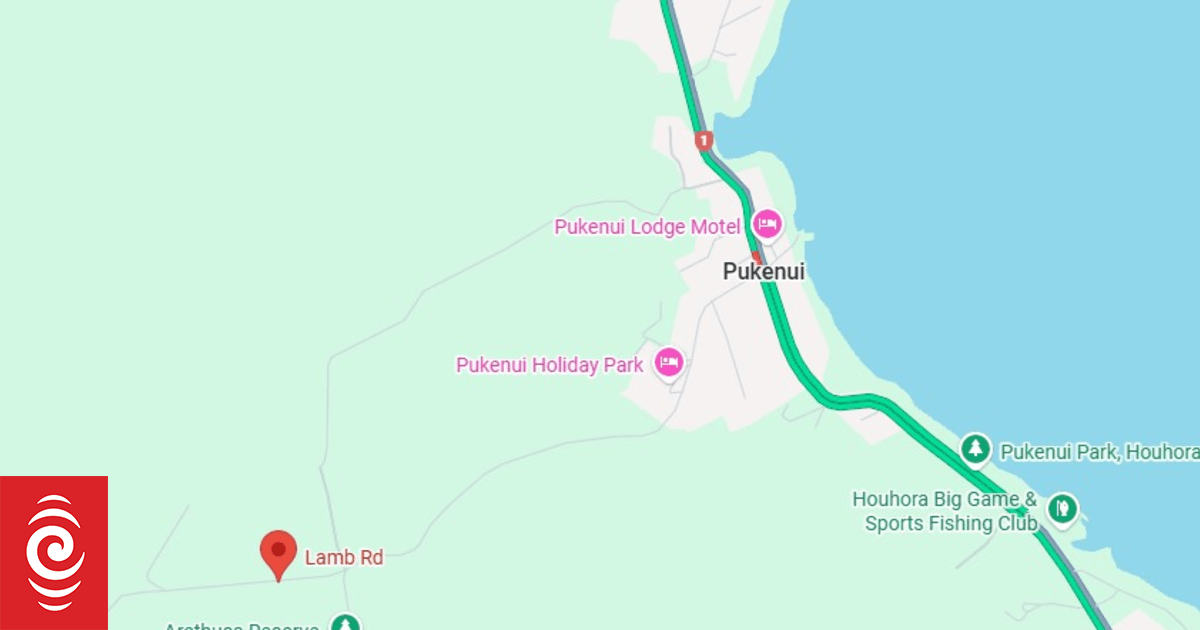Yr 9 food tech students Noah Mckay and Van Leith.
Jodi Bryant visits the bustling new cooking facility at Whangārei Boys’ High School.
There’s a different kind of aroma wafting from the new vicinity of Whangārei Boys’ High School (WBHS), and it’s one that hasn’t
been present here since the school’s establishment in 1881.
It’s the smell of cooking and, for the first time we know of in the school’s 120-plus-year history, it’s being offered to its students as a subject.
Stepping into the spanking new facilities, it’s all hustle and bustle with boys attired in smart black aprons, busy among the gleaming backdrop of stainless steel, state-of-the-art industrial kitchen appliances.
/cloudfront-ap-southeast-2.images.arcpublishing.com/nzme/HFRX44LOVSTMTCQBDIIQQ33IDY.jpg)
Welcome to the Yr 11 Food Tech class of 2022. Out of the activity steps the charismatic and familiar face of Phil Calver, who has taught Whangārei students to cook for the last 15 years.
“Good morning!” he booms, beaming.
He is joined by teacher in charge Craig Hayman and, today, they are teaching the boys how to create stuffed potatoes.
There’s a lot to squeeze into the one-hour session – first there’s the demo, then the practical, if they’re lucky, a munch, theory and, of course, the clean-up. But it’s clear that this class is under control and that these boys are here to learn.
“We try to bring them to a level so they can cook their family a meal at home or get a job in the food industry,” explains Hayman. “I tend to look at it commercially and Phil likes to teach them how to cook at home.”
/cloudfront-ap-southeast-2.images.arcpublishing.com/nzme/JMKGJVLBA2JBWRMEFXWWMMPR6I.jpg)
Hayman, a chef himself, turned his hand to teaching his skill at Kamo High School for 18 years.
There, he was joined by Calver, where they worked together for a decade before Phil took up the role of cooking teacher at Whangārei Intermediate School (WIS).
Hayman joined the WBHS team three years ago as technology teacher and now they have reunited over the newly-completed food tech classes as part of the WBHS $5m-plus rebuild.
“I was going to retire but then they knocked on my door and said, ‘Phil!’, says Calver. “I already knew most of the students (from next door at WIS), I’m high school-trained so it was like coming home. It was a no-brainer.
And I love the role-reversal!” jokes the head of department, shooting a twinkling glance at a chuckling Hayman.
/cloudfront-ap-southeast-2.images.arcpublishing.com/nzme/Z5VXSL2MAHGQU6DYUFU7MSIGRE.jpg)
It’s clean-up time for the Yr 11s – their potatoes are baked, wrapped in tin foil and left to cool until tomorrow’s lesson, when they will be stuffing them with the ham, corn, onion, garlic and cheese filling they’ve prepared.
Soon the gas hobs and benchtops are back to their former gleaming state and the boys file out of the room.
Calver and Hayman step next door into the adjoining junior cooking facility as the Yr 9s stream in.
“Morning Mr!” It’s an amicable relationship between teachers and students and they close in around the front bench where Phil is giving a demo on how to make an omelette.
The boys’ attention is held while Calver concurrently teaches about egg longevity, knife handling, grating cheese sans digit particles, and garnishing, interspersed with cheeky banter from his students.
“Aww, it looks a little brown Mr,” quips one boy after Calver performs the final flip, before they disengage to create their own.
Once again, the classroom springs to life and it’s all go, with boys cracking eggs, picking out errant pieces of shell (still happens in adulthood), and producing their own impressive version of garnished omelette.
At this point, in steps principal Karen Gilbert-Smith, who laughs as one boy typically drowns his omelette in tomato sauce.
“It’s just wonderful walking around the school to the smell of cooking,” she says. “Last week was Samoan Language Week so they produced Samoan food, they’ve made sushi, tiramisu without the alcohol, chicken curry – the boys were taking it home. It’s fabulous to see them really enjoying what they’re doing.
“I love coming down here because it’s great to see the boys really engaged in what they’re doing. Craig and Phil are so enthusiastic about sharing their skills and it’s quite uplifting to be around them, actually.”
/cloudfront-ap-southeast-2.images.arcpublishing.com/nzme/7EEYTYZLN3O2QCEK3N7F4RT33Q.jpg)
Before food tech was available onsite, the only other cooking option was for Yr 12 students to travel to NorthTec to undertake a hospitality course.
Food Tech is currently offered to Yr 9, 10 and 11, which will eventually extend to all year levels. Over 140 Yr 9 students have signed up to learn how to cook over the two semesters since it began, a similar amount of Yr 10s and almost 100 Yr 11 students.
“It’s amazing to be able to have the facilities here. It started with a hiss and a roar and has been hugely popular. That’s really exciting, actually, to see the boys excited about cooking. They’re loving it and the facility itself is amazing because it’s state-of-the-art and everything they might need.”
“They are just boys that want to cook and you can tell that we’re enjoying ourselves,” says Calver. “It’s definitely a sign of the times that things are changing.”
“It’s entirely possible for them to be the home husband and the wife to be the professional,” adds Hayman.
It’s already clean-up time for the Yr 9 class, who have managed to polish off their omelettes in record time.
“At WIS we had 90-minute lessons,” explains Calver. “But here it’s one hour so it’s all about time management.”
/cloudfront-ap-southeast-2.images.arcpublishing.com/nzme/MOVPK7ID4XZLHFOTWCGNEWA4ZY.jpg)
The whirlwind reversal flurry begins and Gilbert-Smith steps back outside into the surrounds of her new school.
With the roll now sitting at around 1300, WBHS had vastly outgrown its undersize and outdated buildings. The 80 per cent re-build took place on the lower fields beginning May 2020 for minimum disruption, a good call considering the lengthy Covid-induced delays.
The $50m budget had also increased due to Covid-inflicted building price hikes.
Although the school lost two of its four playing fields for the new buildings, they gained a new one by clearing and flattening wasteland next to the cycle track on the premises. Demolition of the former school buildings has begun, with decisions yet to be finalised about how the land would be utilised, though Gilbert-Smith says “exciting stuff is in the pipeline”.
“WBHS was established in 1881 combined with Whangārei Girls’ High school and then the schools were split so it has been interesting to reflect on the end of an era and, when the Old Boys come and have a look, nothing will be familiar except what’s in the museum.”
As much history as possible has been preserved; as well as the gymnasiums, the former performing arts block, which is the oldest building onsite, has been retained to become the museum housing trophies and team sports photographs of past pupils which once adorned the school hall.
The honours boards grace the new auditorium, along with the former and new school anchor emblem designs to show how they have evolved.
The kauri beams in the library have been salvaged before demolition, along with rimu floorboards from the hall. In addition, timber from the trees removed to make way for the new bridge to the new entrance off Western Hills Drive/State Highway 1 was used to build a table to hold the 3D model of the new build.
Murals painted on the brick buildings demolished couldn’t be salvaged so they have been photographed and added to the digital files.
“We see it as an opportunity to bring all the best aspects and maybe leave behind some of the things that don’t serve us well in these modern times.”
The new build has 46 teaching spaces including classrooms and breakout spaces where students can work in small groups, an engineering academy, a library, cafeteria, auditorium and marae.
“The master plan is for 1600 – that’s an additional block when we get to that level but, at the moment, we fit and the spaces are working well and once it’s finished. I think it’s going to be pretty amazing.”
The final touches – the horticulture area, astro turf and landscaping – were due for completion at the end of term.
“I’m really pleased that it’s come out the way we planned it to look and feel and the functionality of the teaching spaces is what we’ve expected.
“There’s a real positive sense around the way we want to teach and are now able to teach. I’m really thrilled and I couldn’t be happier.
“The boys have embraced the new school really positively. Most boys are going to try and find a way to break things but the brief we gave the architect is the facility has to really be ‘boy-proof’.
After the first couple of days, it was like we’ve been here forever. We will wait until the whole place is finished to ask the boys’ feedback but, anecdotally, they’re really enjoying it – some said it feels like university, so that’s really lovely.




